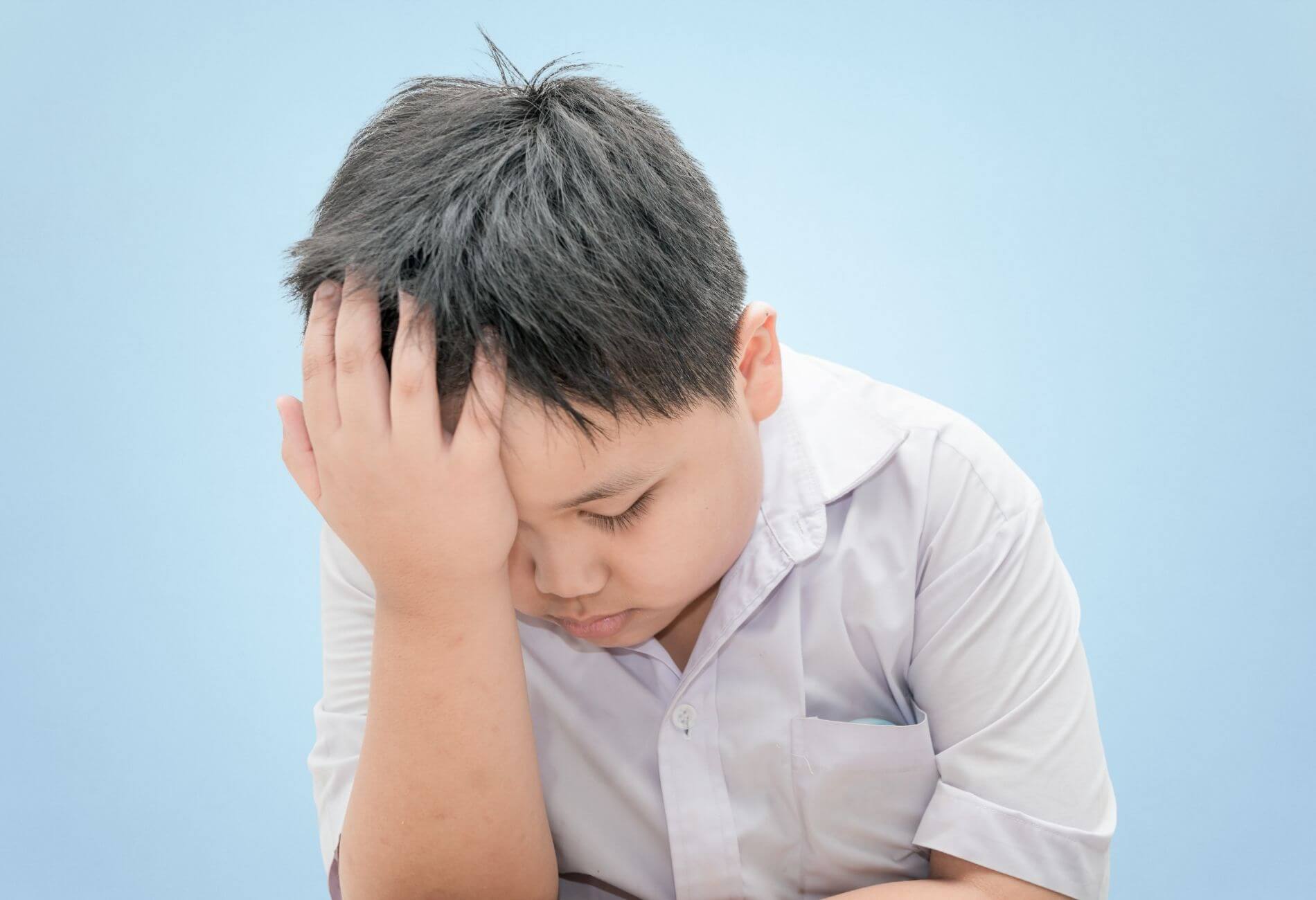Pediatric migraines often go undiagnosed because unlike adults, children cannot easily communicate to their parents or physicians just what type of symptoms they’re experiencing. In many cases crying, lack of focus and symptoms of depression are attributed to things other than the actual problem. Migraines may also be under-diagnosed by doctors, due to the prominence of non-headache symptoms and the shorter duration of an attack. While adults typically have one-sided headaches, children often experience pain on both sides of the head, and the headaches are commonly accompanied
by sensitivity to light and sound.
A common assumption is that headaches in children might be related to poor vision. Often times, children who complain of headaches (as well as visual issues) are referred to pediatric ophthalmologists. A study revealed that an estimated 25% of pediatric patients who see an ophthalmologist for headaches meet the diagnostic criteria for migraine. The percentages were the same for male and female patients.
In addition to head pain, during a migraine attack, some children may experience blurred vision, perception of jagged lines, or partial loss of vision. Ophthalmologists should remain cognizant of the prevalence of pediatric migraine and consider it in pediatric patients complaining of migraine symptoms.
Visual migraines are temporary visual disturbances that usually affect both eyes. If the visual disturbance is followed by a throbbing one-sided headache, it is referred to as “migraine with aura” (classic migraine) and the visual disturbance is called an aura rather than an ocular migraine. A migraine without a visual disturbance is called a migraine without aura (common migraine).
Ocular Migraine vs. Visual Migraine
Ocular or retinal migraines happen in the eye, so only affect the vision in that eye, while visual migraines occur in the brain, so affect the vision in both eyes together.
Ocular migraines are believed to have the same causes as migraine headaches. Unfortunately, a visit to the eye doctor may not help much in terms of how to treat or prevent ocular migraines as the visual symptoms that accompany ocular migraines are not related directly to the eyes but rather to the migraine activity in the brain.
Children’s Headaches Rarely Linked to Vision Problems
Regarding headaches… In a study conducted by pediatric ophthalmologists at Albany Medical Center in New York State, researchers reviewed medical records of children under age 18 who were seen at the clinic between 2002 – 2011 and all had received complete eye examinations. The findings showed there was no significant correlation between children’s frequent headaches and a need for vision correction. “We hope our study will reassure parents that in most cases, their children’s headaches are not related to vision or eye problems…” said Zachary Roth, MD, an ophthalmologist who led the research team.

What to Do if a Migraine Diagnosis is Made
If a diagnosis of migraine is made, a good place to start is with effective nutritional support with a combination of nutritional supplements that many pediatric neurologists recommend to maintain normal cerebrovascular tone and function. These ingredients are:
- High dose Riboflavin (Vitamin-B2)
- Magnesium
- Feverfew
All 3 ingredients are listed in the American Academy of Neurology’s Guidelines for Migraine Prophylaxis.
Migraine Diary and Trigger Tracker
Record important facts about migraines, before, during and after an attack to help identify and avoid potential migraine triggers. Preventing migraines by avoiding things that trigger them is key to migraine control. (Download free migraine diary/trigger tracker)

Help Your Child Live a Healthy Lifestyle
The migraine brain loves consistency, so basically any change can trigger an attack in a hyper-responsive brain. Modifying lifestyle for the prevention of migraines and headaches includes being consistent.
1. Sleep – Make sure your child is getting enough sleep each night and maintaining as close to a consistent sleep schedule as possible (going to bed and waking up at the same time each day). Getting young children and adolescents to bed early can be challenging. The American Academy of Pediatrics recommends keeping bedtime manageable and under 30 minutes.
Children learn by watching their parents and other adults, so parents should be mindful of the examples that they are setting even during “unimportant” activities like going to bed at a certain time. Have your child turn off his or her devices (smart phone, tablet, television, computer) at least one hour before bedtime. Excessive blue light exposure from screens can throw off circadian rhythm making it difficult to fall asleep and stay asleep. Because kids benefit from structure, following a bedtime routine is the best way of getting children to develop the healthy sleeping habits that they may carry into adulthood. Sleep is the most successful tool you and your child can rely on for maintaining physical and mental health as well as longevity.
2. Hydration – Drinking plenty of water every day is important for migraine sufferers. A vast majority of people are chronically dehydrated as they opt for more flavorful alternatives. Unknowingly they become more dehydrated by drinking sugary beverages and caffeinated drinks. Children age 4-8 should drink approximately 7 cups a day, age 9-13 9-10 cups, and 14-18, 10 cups of water. Beverages should not contain caffeine or artificial sweeteners.
3. Exercise – Encourage your child to exercise at lease 3 days a week. Many children spend a great deal of time in front of a computer screen or mobile device. Keep them moving as exercise increases blood flow in the body and to the brain, can be a great way to channel nervous energy, plus it releases feel-good endorphins that boost your child’s mood.
4. Dietary supplements for children and teens with migraine– Consider a nutritional regimen of dietary supplements whose ingredients have been shown in clinical studies to be beneficial for both adults and children with migraines.


